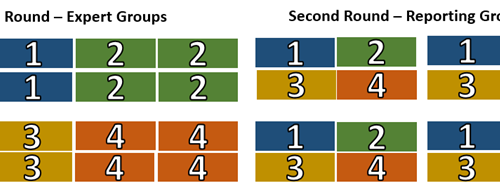Designing the Core Activities in Your Lesson
By Dr. Nasreen Sultana, Teaching and Learning
Before you start reading, ask yourself the following questions:
- How do I plan for the activities in the classes?
- What do I intend to achieve by those activities?
- How many activities do I have for each of the hours I teach?
Ideally, when a professor receives a course, in most cases, the course outline, learning materials, and assessments are already designed. You will probably receive a course shell with all the materials. Please note that Conestoga’s course design follows a backward design; the end goals or the course outcomes are already decided before the content and assessments. (Bowen, 2017; McTighe & Wiggins, 2012). So, the course content, activities and assessments need to be aligned with the course outcomes.
In most cases, designing the class activities is the responsibility of the faculty. In other words, faculty are responsible for creating a positive and inclusive space for the students with active learning opportunities throughout the lesson (see Conestoga’s Course Delivery Procedure). The activities should help the learners to meet the course outcomes. Usually, while teaching, faculty should use different types of activities in different parts of the lesson to create learning opportunities for the students. In this article, we will discuss the key considerations for planning the core activities of a lesson.
There should be at least one well-designed engagement opportunity for the students in each hour we teach. For example, if you teach three hours (both in person and online), your lesson will look like this:

Figure 1: What a lesson may look like (example of a three hours lesson)
What happens in each of the chunks:
- The BOPPPS lesson planning you use will be repeated three times in these three hours. You will break your lesson into multiple chunks. (see Content Chunking in Your Lessons)
- Some of the elements of the lesson plan may not be repeated the second or third time if you do not have time or need. For example, you may want to put Bridge in and pre-assessment together in the second and third hour, or you may not have any bridge-ins after the first hour.
- Consider how your lesson is aligned with the course outcomes. How are the students going to meet the course outcome(s) after attending this lesson?
- Each hour you teach needs to have a central participatory piece; that is, each of the 50 minutes will have at least one activity from 7 to 10 minutes where students can engage with the content taught in that chunk of the lesson. Please note that this central activity does not discount the other activities you may use.
Aligning the hourly activities:
- First, locate the learning outcomes you teach in a particular lesson.
- Then, divide the session into three chunks (for a three-hour lesson, for example). Each of the chunks should be designed based on BOPPPS elements:
- An intro (one small activity to hook the students to the lesson or explore the prior knowledge)
- A body (where the main activity takes place)
- A conclusion (a summary of this chunk)
- When you design/plan the central activity, ask yourself the following questions:
- How is the activity aligned with the verb in the course outcomes? (see this article on Taxonomy)
- How does the activity prepare the students for their assignments/assessments?
- Time the activity carefully so that students have time to be engaged and you have some time to debrief them.
When we do lesson chunking and add at least one meaningful activity in each of the hours we teach, the chances of continuous lecturing are reduced. Students can be engaged in the hourly sessions, and we also have the opportunity to create a link between the outcomes, content and assessment.
If you would like to discuss this topic, please email Teaching and Learning and connect with one of the consultants.
References
Bowen, R. S. (2017). Understanding by design. Vanderbilt University Center for Teaching. https://cft.vanderbilt.edu/understanding-by-design
Wiggins, G., & McTighe, J. (2005) Understanding by design (2nd ed.). Alexandria, VA: Association for Supervision and Curriculum Development ASCD. Colombian Applied Linguistics Journal, 19(1), 140–142. https://doi.org/10.14483/calj.v19n1.11490



